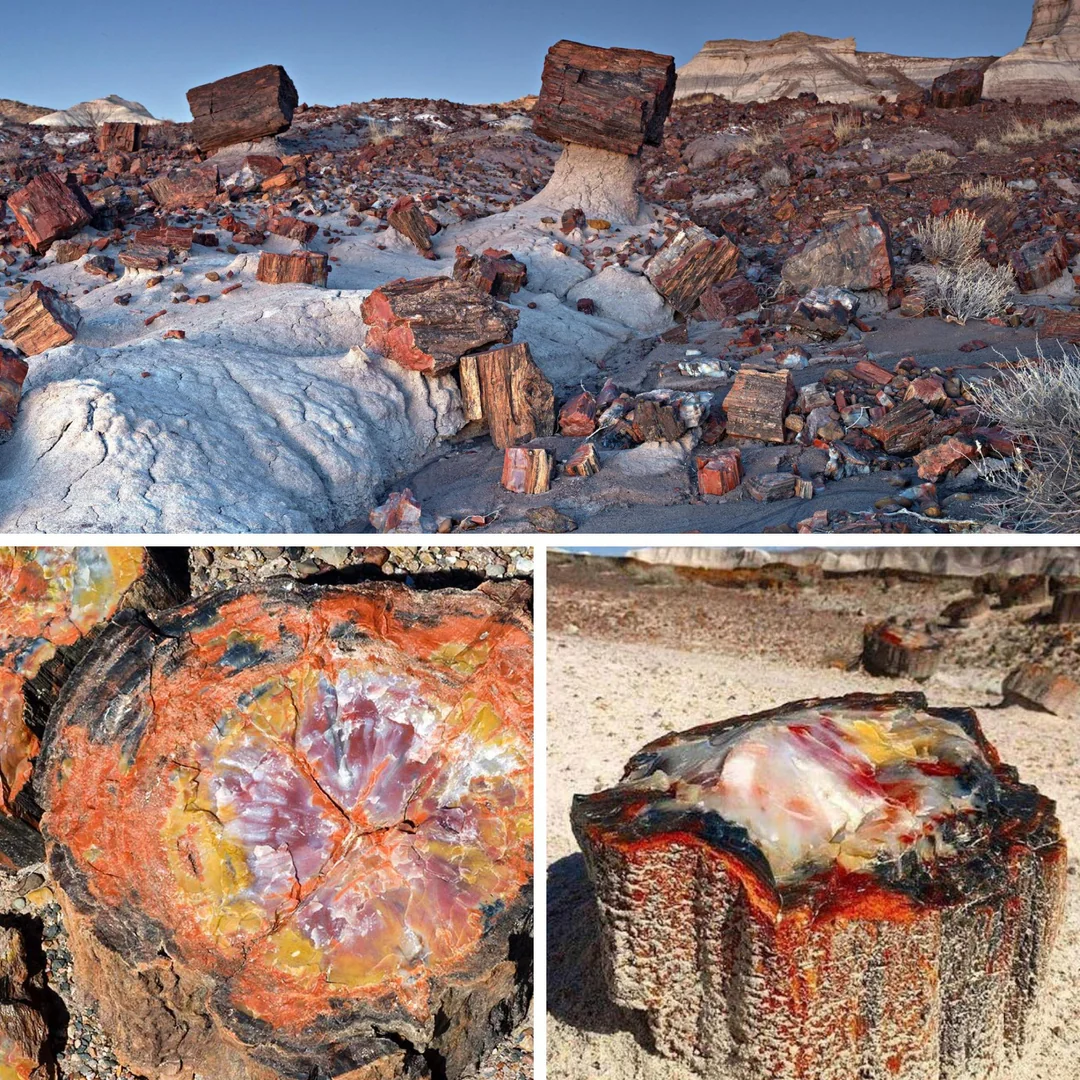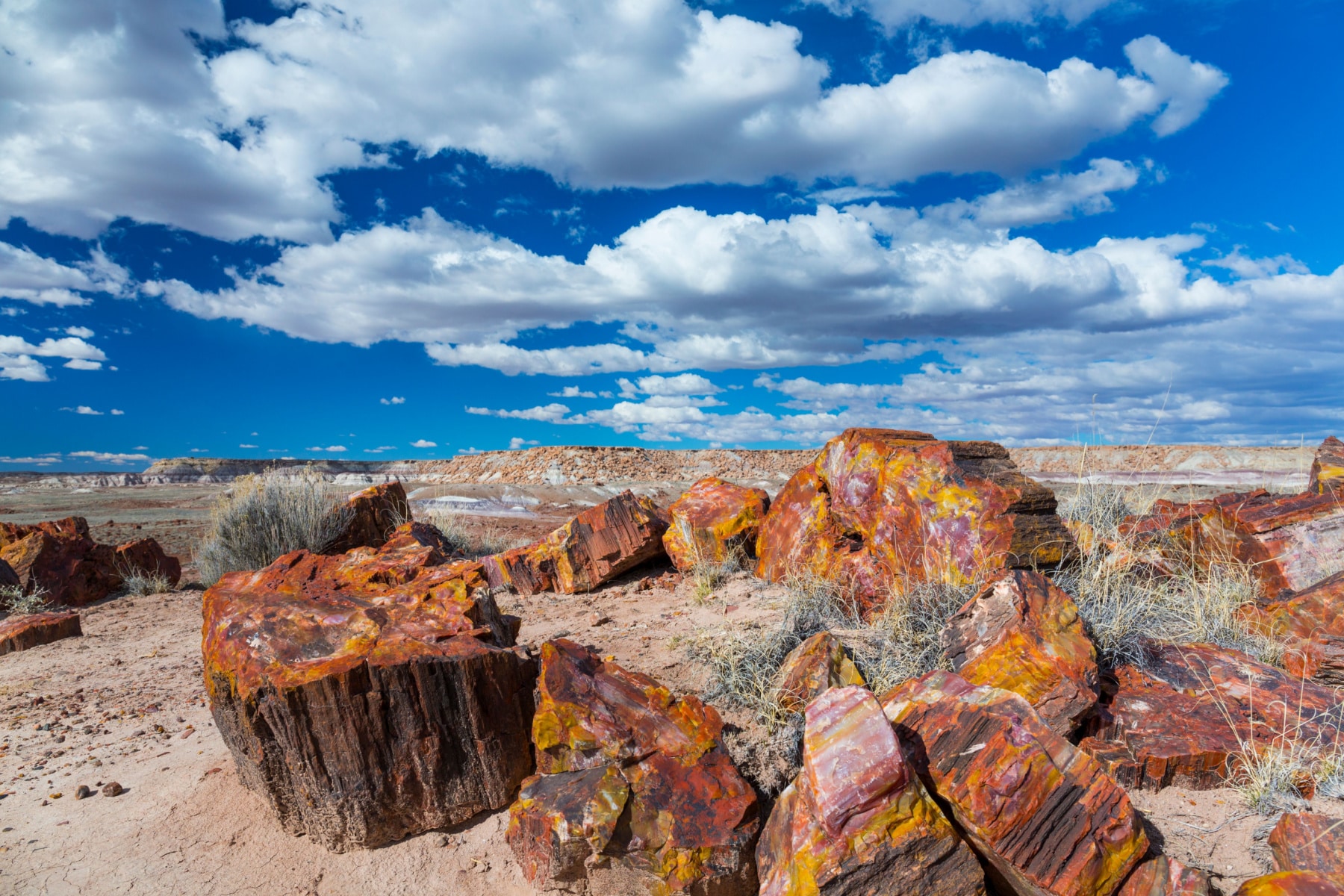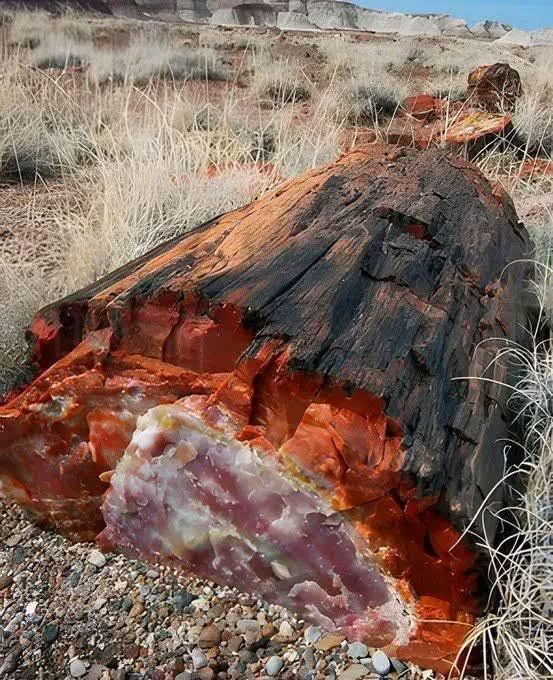Introduction: A Walk Through Time (100-150 words)
Imagine standing in the vast and arid lands of Arizona, surrounded by colorful rocks and towering remnants of ancient trees. This isn’t just a picturesque desert scene, but a window into the distant past — one that spans 220 million years. The Petrified Forest National Park is a unique place where ancient trees from the Late Triassic period were transformed into stunning fossils, turning them into brilliant mineralized stones. It is a place where nature has managed to preserve its history, offering a glimpse of life long before humans ever walked the Earth. This article takes you on a journey to understand the origins, formation, beauty, and scientific significance of the petrified in this extraordinary location.

The Origins of the Petrified Forest: A Story of Cataclysm and Time (400-500 words)
The Petrified Forest National Park in Arizona is one of the largest and most well-known fossilized forests in the world. But how did this ancient forest end up as a geological wonder? The answer lies in a chain of catastrophic events that took place millions of years ago.Around 225 million years ago, the area was covered by lush forests filled with diverse flora and fauna, including towering trees. These trees were part of the coniferous forests that existed during the Late Triassic period. However, a series of volcanic eruptions and flooding led to the swift burial of these trees under layers of volcanic ash and sediment. Once buried, the trees were cut off from oxygen, which prevented them from decaying.
Over time, water carrying minerals, including silica, seeped into the wood, replacing the organic material and slowly turning it into stone. This process is known as petrification. The transformation didn’t happen overnight — it took millions of years for the trees to become the brilliantly colored, fossilized logs we see today. The mineralization process is what allowed these ancient trees to survive through geological upheavals, such as earthquakes and volcanic activity, and stand the test of time.
The combination of water, minerals, and the ideal environmental conditions led to the preservation of the wood in an extraordinary way. These petrified trees tell the story of a world long lost, where dinosaurs roamed and forests flourished in what is now the American Southwest.
What Is Petrified Wood? The Science Behind Fossilization (400-500 words)
Petrified wood is a form of fossilization that occurs when plant material, typically wood, is buried in an oxygen-deprived environment and subjected to mineral-rich waters. Over time, the wood’s organic material is replaced by minerals, creating a stone-like version of the original plant. The process of petrification happens over thousands to millions of years and is one of nature’s most intricate processes.
The most common mineral found in petrified wood is quartz, which is composed of silicon dioxide. Quartz replaces the organic material within the wood, retaining the structure of the original tree while turning it into a rock. The most fascinating aspect of petrified wood is how it retains the intricate patterns, growth rings, and even bark texture from the original tree.
In rare cases, the wood is replaced by other minerals like opal, creating a type of petrified wood known as opalized wood. Opal is an iridescent and highly valued material, often found in vibrant colors such as blues, greens, and reds, which adds an extra layer of beauty and rarity to the petrified wood.
The process of petrification results in a fossil that is often more durable than the original organic material. The mineralization protects the tree’s structure from decay and weathering, allowing these ancient trees to endure for millions of years. In the case of the Petrified Forest, some of the trees are more than 220 million years old, and they offer an unparalleled glimpse into a long-forgotten world.

The Colors and Beauty of Petrified Wood (500-600 words)
One of the most captivating features of the Petrified Forest is the incredible range of colors found in the fossilized trees. While quartz is the most common mineral that replaces the organic material in the trees, the presence of other minerals, such as iron, copper, and manganese, gives the wood its dazzling array of colors.
The most common colors found in the petrified trees include reds, oranges, purples, and blues. These colors are the result of various minerals interacting with the wood over time. For example, the reddish hues are often caused by the presence of iron, while copper can create blue or green shades. The vibrant colors add to the surreal beauty of the forest and make each piece of petrified wood a unique work of art.
Some of the trees in the Petrified Forest exhibit striking, multi-colored patterns, where different sections of the wood have been replaced by different minerals. These patterns are like nature’s fingerprint, making each fossilized tree a one-of-a-kind treasure. The colors and textures vary depending on the minerals in the environment, as well as the age and condition of the tree when it was buried.
In some rare cases, the mineralization process results in opalized wood, which is even more prized due to the iridescent sheen that opal gives the wood. The shimmering play of colors in opalized wood adds an extra layer of magic to the already spectacular landscape of the Petrified Forest. These iridescent pieces of wood are highly valued by collectors and are among the most sought-after specimens in the world.
The stunning visual appeal of the Petrified Forest’s fossilized trees is a testament to the powerful forces of nature and the beauty that can emerge from the process of petrification. The colorful rocks that dot the landscape offer a vivid reminder of the natural world’s enduring creativity, turning once-living trees into permanent works of art.
Why the Petrified Forest Is a Must-Visit Destination (400-500 words)
The Petrified Forest National Park is a place unlike any other on Earth. It is a stunning example of nature’s power to preserve and transform. As one of the most significant fossilized forests in the world, it offers a unique opportunity to explore the Earth’s ancient past. The park is home to some of the most well-preserved examples of petrified wood, and its striking beauty is a major draw for tourists from around the globe.
Visitors to the park can walk along numerous trails that wind through the fossilized trees, providing an up-close view of the ancient wood. These trails, such as the Blue Mesa and Crystal Forest Trails, offer an opportunity to explore the rich history and stunning geological formations that define the park. Many of the trees found in the park are millions of years old, and each one tells a story about the world during the Triassic period.
In addition to the petrified wood, the park is also home to a wide variety of wildlife, including birds, mammals, and reptiles. Visitors can spot desert creatures such as lizards and coyotes, as well as a range of bird species that call the park home. The juxtaposition of ancient trees and modern wildlife creates a fascinating contrast that makes a visit to the park even more memorable.
The Petrified Forest National Park is also a site of great cultural significance. Long before it became a protected area, the land was inhabited by various Native American tribes. These tribes used the area’s resources, including the petrified wood, for tools and spiritual purposes. The park also houses ancient petroglyphs and other archaeological sites that offer a glimpse into the lives of the people who lived there thousands of years ago.
8 Things You Can’t Miss On Your First Visit to Petrified Forest
Conclusion: Nature’s Enduring Legacy (150-200 words)
The Petrified Forest National Park is a testament to the incredible power of nature and the resilience of life. It’s a place where the past is preserved in stunning detail, allowing us to connect with a world that existed long before humans ever set foot on the planet. The fossilized trees, which have withstood the test of time, offer a glimpse into an ancient ecosystem and remind us of the long history of our planet.
By visiting the Petrified Forest, we are reminded that nature doesn’t simply disappear; it finds ways to preserve its memory in the stones and fossils that stand as silent witnesses to the ages. The colors, textures, and patterns of the petrified wood are a beautiful reminder that even in death, life can endure and leave behind something truly extraordinary.
Call to Action (CTA):
“Experience the timeless beauty of the Petrified Forest National Park. Walk through history, and witness the incredible fossilized trees that have survived for over 220 million years. Plan your visit today!”


